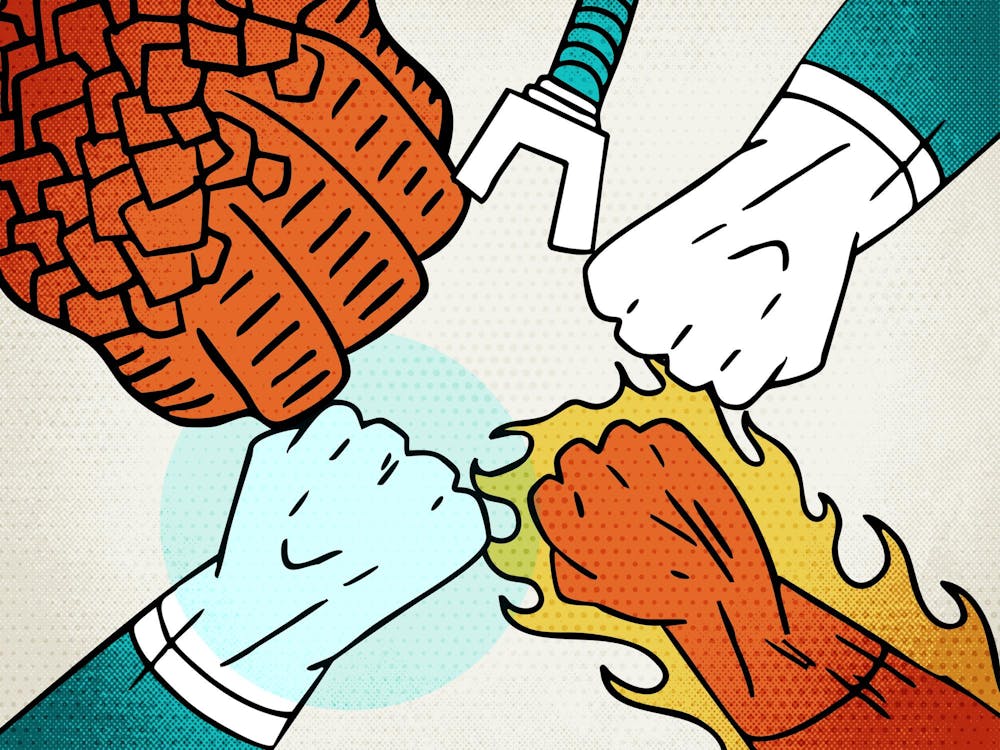As a longtime Marvel enthusiast, I must admit that over the past few years I have found myself increasingly disappointed with the studio’s output. The COVID-19 pandemic heavily impacted the movie industry, and the dissolution of the original Avengers — whether by death or controversy — left studio heads with little to anchor new stories. At the moment, Tom Holland’s Spider-Man is arguably Marvel’s biggest selling point. Although recent releases like “Deadpool & Wolverine” have garnered significant attention (I saw it four times in theaters), much of that popularity stems from the return of Hugh Jackman’s abs, aligning with the studio’s broader trend of prioritizing celebrity and nostalgia over substance. Perhaps worse than this shallow approach is Marvel’s unrelenting use of the multiverse to merge worlds, resurrect long-dead characters, and make niche references only superfans could recognize. While there is nothing inherently wrong with otherworldly exploration, it now feels as though the studio can’t go 30 minutes without trotting out a celebrity cameo from a parallel universe.
This decline has weighed heavily on my moviegoing experience, and I’ve grown frustrated with the formulaic content Marvel continues to churn out. Yet I still find myself in theaters for every release, clinging to the hope of recapturing that first spark I felt watching “Iron Man” on a ratty couch with my dad. When I settled into my local AMC theater last July for “Fantastic Four: The First Steps,” popcorn in hand, my expectations were modest — some quips from Joseph Quinn’s Johnny Storm at best. Instead, I was captivated by the film’s confident retro-futurist aesthetic, refreshingly classic superhero setup and perhaps most monumental of all: the sigh of relief I let out when the credits rolled without a minute of multiverse madness.
That tonal shift is evident from the opening sequence, where the Fantastic Four are introduced through a newsreel-style montage. Mid-century visuals, bold costumes and vintage sci-fi flair give the movie a distinct identity, something Marvel has sorely lacked. What made this choice especially meaningful is how closely it ties back to the Fantastic Four’s 1960s comic book origins. By leaning into a retro look, the movie honors the team’s history while avoiding the interchangeable gray-and-purple CGI landscapes that have dominated recent MCU entries. For once, the aesthetic wasn’t smothered in gloss, though Reed and Sue’s baby cradled in the arms of a digital rock monster certainly stretches believability. Instead, the muted color palette, practical set design and jazzy score create an immersive atmosphere that recalls the wonder of Phase One while still feeling fresh to new viewers.
But “Fantastic Four” does more than revitalize Marvel’s look — it reintroduces a storytelling model built on family and relationships. Over its brisk runtime, I became invested in the dynamics of the core four, from Johnny and Ben Grimm’s bickering hijinks to Reed and Sue’s grounded leadership. Ben’s transformation into the Thing carries real emotional weight, forcing both him and his teammates to confront the cost of heroism. Sue and Reed, meanwhile, aren’t just leaders but parents, balancing the safety of the world with the safety of their child — a dual responsibility that feels grounded in a way Marvel hasn’t tapped into in years. This shift from prioritizing cameos to developing genuine interpersonal arcs connects the audience to the film in a way Marvel hasn’t achieved in years.
This rediscovered audience relationship brings a welcome return of emotional resonance. “Fantastic Four” explores timeless themes of sacrifice, family and belonging with far more depth than recent efforts like “Captain America: Brave New World” or “Deadpool & Wolverine.” Whether it was Sue’s desperate plea to protect her child and the world or Johnny’s unlikely bond with the adrift Silver Surfer, these motifs remind viewers why superhero stories resonate — they’re not just about powers but about people. At a time when superhero fatigue dominates cultural conversations, the film’s willingness to focus on relationships gives even casual viewers a reason to care.
Marvel has also been desperate for new tentpoles to carry the franchise forward. After box-office disappointments like “Eternals” and “The Marvels,” both of which barely recouped production budgets, “Fantastic Four” finally delivered. Grossing roughly $506 million, it marked a clear financial rebound. Though it fell about $80 million short of “Iron Man’s” landmark debut, the numbers suggest this film could be the reset button the MCU needs. Compared with the lukewarm receptions of “Quantumania” and “The Marvels,” the turnout for “Fantastic Four” proves audiences are still willing to show up for superhero movies when the product feels both fresh and emotionally authentic. Nostalgia-driven enough to appeal to lifelong comic fans yet accessible enough for casual audiences, the Fantastic Four may be Marvel’s ideal bridge into its next era.
After five years of frustration, Marvel has finally managed to rekindle that spark I first felt when Robert Downey Jr. suited up as Iron Man. If the studio learns from this success — prioritizing story, characters and vision over gimmicks — we could be on the cusp of a second golden age of superhero cinema. Marvel has stumbled, but with “Fantastic Four,” it may have found its footing. Whether it lasts remains to be seen, but for the first time in years, I left the theater eager for what comes next.



